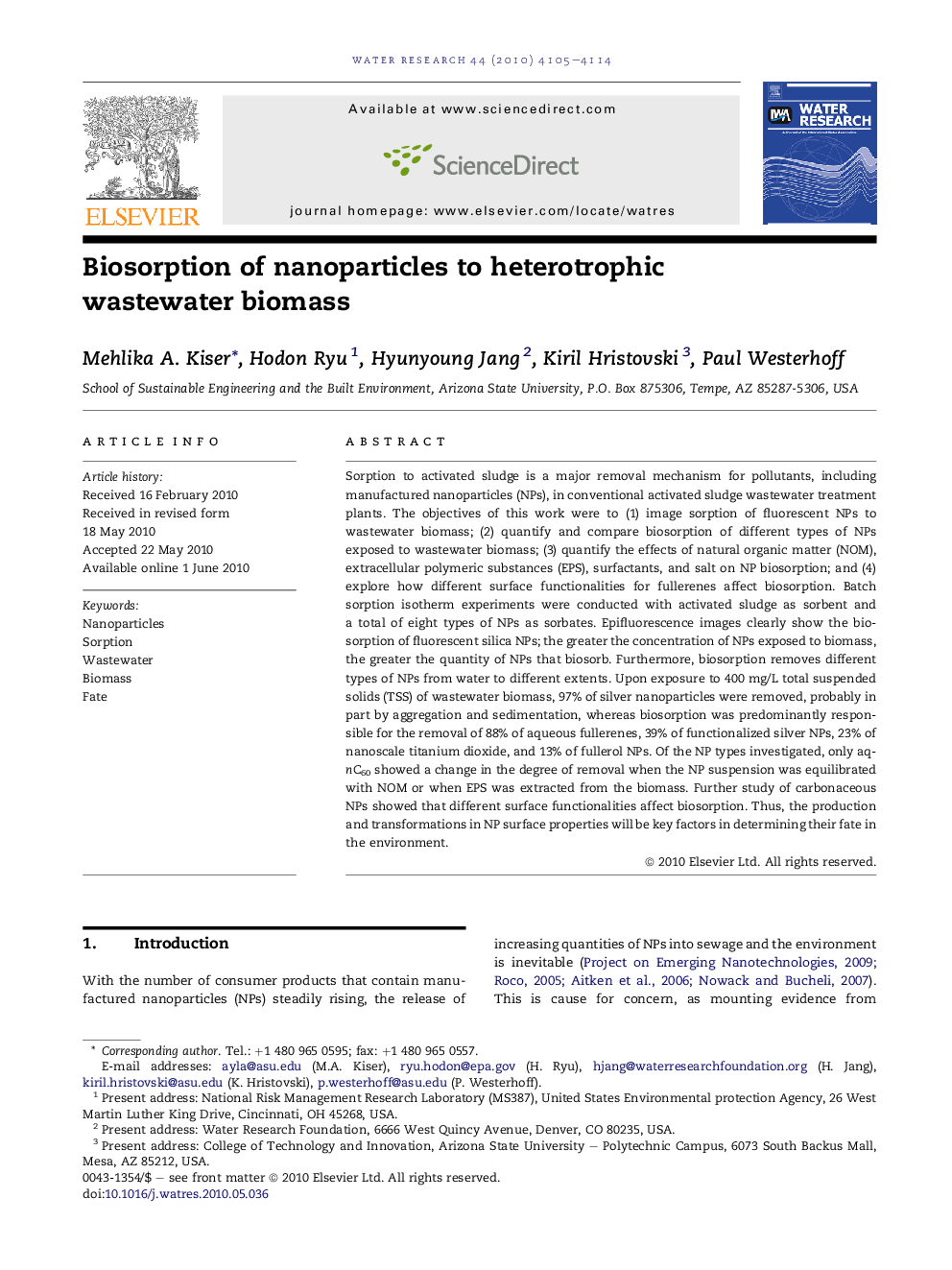| Article ID | Journal | Published Year | Pages | File Type |
|---|---|---|---|---|
| 4483652 | Water Research | 2010 | 10 Pages |
Sorption to activated sludge is a major removal mechanism for pollutants, including manufactured nanoparticles (NPs), in conventional activated sludge wastewater treatment plants. The objectives of this work were to (1) image sorption of fluorescent NPs to wastewater biomass; (2) quantify and compare biosorption of different types of NPs exposed to wastewater biomass; (3) quantify the effects of natural organic matter (NOM), extracellular polymeric substances (EPS), surfactants, and salt on NP biosorption; and (4) explore how different surface functionalities for fullerenes affect biosorption. Batch sorption isotherm experiments were conducted with activated sludge as sorbent and a total of eight types of NPs as sorbates. Epifluorescence images clearly show the biosorption of fluorescent silica NPs; the greater the concentration of NPs exposed to biomass, the greater the quantity of NPs that biosorb. Furthermore, biosorption removes different types of NPs from water to different extents. Upon exposure to 400 mg/L total suspended solids (TSS) of wastewater biomass, 97% of silver nanoparticles were removed, probably in part by aggregation and sedimentation, whereas biosorption was predominantly responsible for the removal of 88% of aqueous fullerenes, 39% of functionalized silver NPs, 23% of nanoscale titanium dioxide, and 13% of fullerol NPs. Of the NP types investigated, only aq-nC60 showed a change in the degree of removal when the NP suspension was equilibrated with NOM or when EPS was extracted from the biomass. Further study of carbonaceous NPs showed that different surface functionalities affect biosorption. Thus, the production and transformations in NP surface properties will be key factors in determining their fate in the environment.
